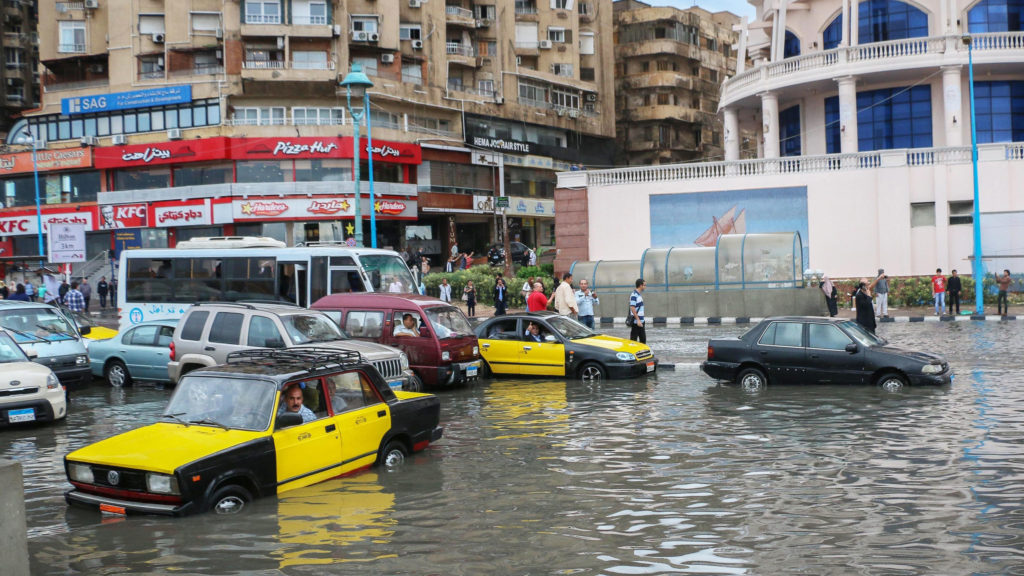On Tuesday, unexpected rainfall has pushed Egypt off the rails, with many of its major roads shutting down for hours after bearing the brunt of the bad weather. The rain continued to fall over major districts of Cairo throughout Wednesday as well as today. The Egyptian Meteorological Authority expects the downpour to carry on until Friday.
Disturbing images of water-filled tunnels, floating cars, blocked roads, disgruntled commuters, and the Greater Cairo district in utter chaos have upset many Egyptians. A daily commute of an hour turned into a hopeless four to six-hour struggle.

This is not the first time that this has happened; last year, New Cairo was in disarray after floods closed major roads, and every year, Egyptians spin the same jokes but does anything really change?
A few decades ago, the desert atmosphere of Egypt negated the need for proper storm drainage systems. It always rained, but floods on such scale were a rarity. However, today, climate change is challenging our modern understanding of how weather works. Just this year, heat waves were recorded all over Europe, and in mid-October in Egypt, there were reports of hail on Ismailia road. Things are changing, and if we do not update our ways of dealing with rainfall and floods, we will suffer from the same losses of each year.

Our approach with natural crises is to wait for them to happen, and then try to mitigate the losses. All over Cairo, government workers are using hoses, motors, and trucks to pump out water from the streets, but why exert effort and spend resources on fixing the problem when we can avoid it in the first place? Here are some of the solutions that cities use to prevent rainfall and floods from escalating.
Storm drainage systems

A storm drainage system is a simple infrastructure design that drains excess rain and groundwater that collect on impervious surfaces such as streets, parking lots, and sidewalks. The water is then drained into the public sewer.

These systems are quite ubiquitous across countries with seasonal rainfall to prevent flooding.
Street tiles that absorb rainwater

Climate-resilient streets in Copenhagen, Denmark are designed in such a way that the asphalt is replaced with tiles to allow rainwater to seep through the surface. The water is then infiltrated to the groundwater aquifers.
Build man-made lakes across Cairo

This solution has been adopted in the tropical city-state of Singapore, where heavy rains fall all year long. In 2006, the ‘Active, Beautiful, Clean Waters Program’ was implemented with the purpose of collecting water from rain and floods and build artificial lakes across their city for recreation purposes.
All over Singapore, there are stations that collect rainwater and pump it to major water bodies across the city. For instance, the Kallang River, which used to be a concrete channel prior to the program, was refurbished and is now one of the major recreational spots in Singapore.



